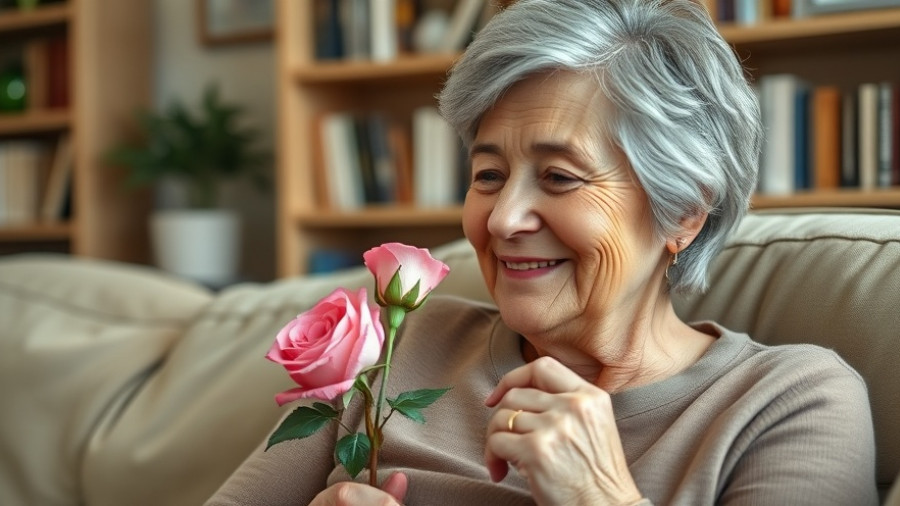
The Silent Impact of First Impressions
When stepping into a doctor’s office, how you present yourself speaks volumes. For older women, dressing well for medical appointments isn’t merely about aesthetics; it’s a reflection of self-respect and societal perceptions. In The UGLY Truth: How Older Women Dress at Medical Appointments Matters!, the video highlights a pressing issue: age-related bias affects the quality of care older women receive, often influenced by how they dress. The reality is that when a woman shows up looking well-cared for and put together, it signals to her healthcare providers that she values her health and well-being. This underscores a crucial message: your attire matters, and it can alter the dynamics of your medical care.
In The UGLY Truth: How Older Women Dress at Medical Appointments Matters!, the discussion dives into how attire impacts older women's health care experiences, exploring key insights that sparked our analysis.
Layering for Comfort and Care
As practical as it might seem to bundle up for warmth, wearing overly layered clothing can hinder necessary medical examinations. For older women, opting for easy-to-remove layers and simple styles can streamline the process significantly, ensuring that all areas needing assessment are accessible. Instead of jumpsuits or thick sweaters, a light blouse layered with a cardigan allows quick adjustments and an overall smoother experience during appointments—one that fosters comprehensive examinations free from unnecessary delays.
Minimize Accessories for Maximum Clarity
Even though we all love to express ourselves through jewelry, excessive accessories can become obstacles in a medical setting. Wearing a heavy necklace or bracelets can complicate procedures like EKGs or general exams. Instead of decorative additions, choosing minimalistic jewelry, or none at all can ensure your healthcare team can perform their job efficiently. This thoughtful approach fosters an atmosphere where your health becomes the priority—the focus should be on your well-being, not on disentangling items from the exam process.
The Role of Hygiene in Health Perception
Hygiene carries a significant weight in doctor-patient interactions. Arriving clean and groomed signals to medical professionals that you’re managing well and attending to your own needs, while the opposite might raise concerns regarding mental health or social isolation. A hygienic appearance doesn't just reflect personal care; it plays a role in how others perceive and interact with you, establishing a vital connection that encourages thorough attention to your health and well-being.
Shoes: A Foundation for Stability
Footwear holds more importance than we often recognize. Appropriate shoes not only provide stability but also reflect your health status to your providers. Wearing supportive shoes that ensure safety during movements can prevent falls, a prominent risk for many older adults. By opting for sneakers or shoes designed with support, you're not just protecting your physical health; you're also communicating your proactive stance towards wellness.
Dressing for Presence: The Pajama Dilemma
While comfort is undoubtedly important, arriving in pajamas or overly casual clothing sends a subconscious signal of disengagement from your health journey. Simple, clean clothing fosters an active role in your healthcare, encouraging a mindset that prioritizes dialogue and wellness. It illustrates your commitment to participating in your health outcomes.
The Colors of Confidence: Putting Life in Style
Surprisingly, color choices can significantly affect both your mood and how others perceive you. Bright colors rather than muted tones can create a more engaging atmosphere in a clinical setting. Wearing colors that make you feel confident can lift your spirits, drawing attention and positivity toward your presence. Dressing cheerfully reminds not only yourself but also your medical providers of your vitality and will to embrace life.
In conclusion, while it may seem trivial, the way older women dress for doctor’s appointments holds tremendous weight in the quality of care they receive. With mindful choices that prioritize comfort and practicality, older women can ensure they are seen and heard during their visits, advocating for their health by simply showing up ready to engage. So next time you prepare for an appointment, think about how you want to be perceived—dressing thoughtfully can make all the difference in your healthcare experience.
 Add Row
Add Row  Add
Add 


Write A Comment